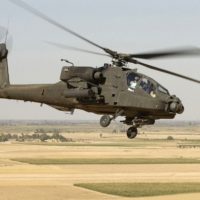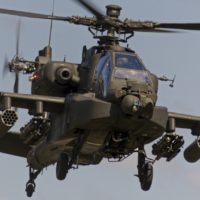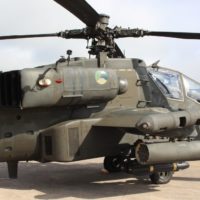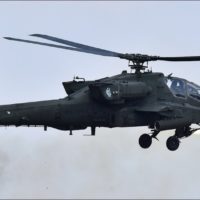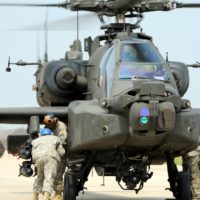Boeing AH-64 Apache Longbow (Guardian) Cost, Seat, Specs, and Details. The AH-64A/ D Apache and AH-64E Block III Apache Longbow (renamed Guardian) are four-blade twin-engine attack helicopters manufactured by Boeing. The Apache was originally developed by Hughes Helicopters in the 1970s (first flight on September 30, 1975), however, the company was acquired by McDonnell Douglas in 1984. In 1997, McDonnell Douglas merged with Boeing.

Boeing AH-64 Apache Longbow: Production
The first Apache Longbow was delivered to the U.S. Army in April 1997. The latest variant, the AH-64E Apache Guardian helicopter (originally designated AH-64D Block III), is powered by two General Electric T700-GE-701D turboshaft engines with 1,994 shp each. The AH-64D/ E models are based on the original AH-64A, which was deployed in 1984 and first used in combat in 1989 in the U.S. military operation in Panama. Between 1984 and 1997, Boeing produced 937 AH-64As for the U.S. Army, Egypt, Greece, Israel, Saudi Arabia, and the United Arab Emirates. The combat-proven AH-64A is still in service.
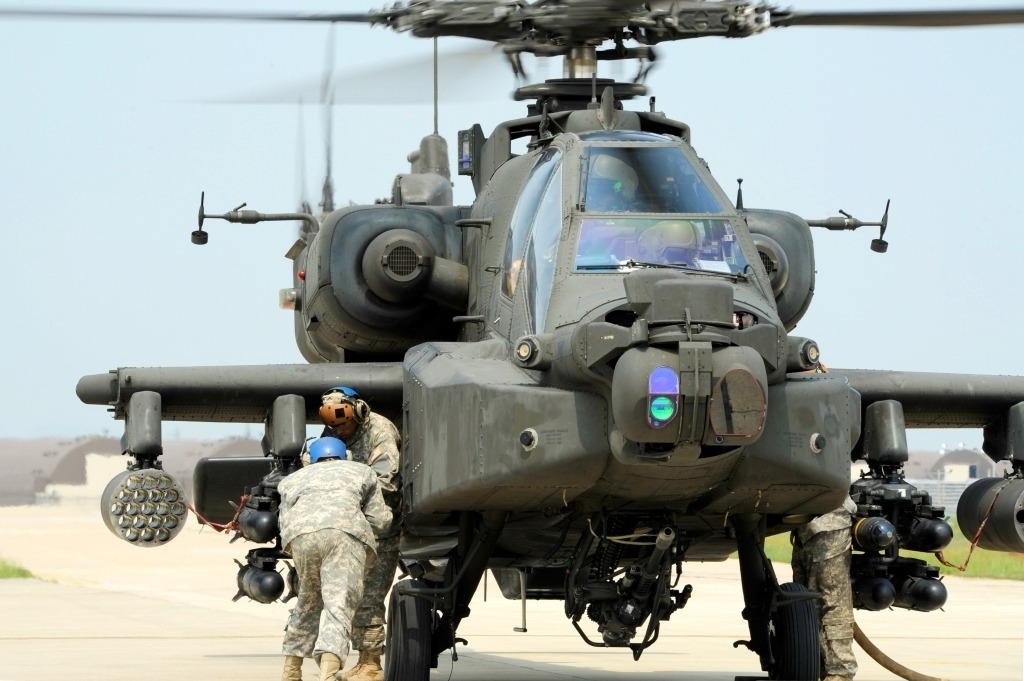
Boeing AH-64 Apache Longbow: Product Type
- Twin-Engine Attack HelicopterUsing Service (US)
- ArmyProgram Status
- Full Rate Production (AH-64E) Prime Contractor
- Apache: The Boeing Company
- Integration: Northrop Grumman Corp
- Integration: Lockheed Martin Corp
Key AH-64E Apache Longbow sensors include the Lockheed Martin/Northrop Grumman (Longbow LLC) AN/APG -78 Fire Control Radar, which has a very low probability of intercept. Other sensors used on the AH-64E are the AN/APR -39 Radar Warning Receiver (RWR) from Northrop Grumman, the BAE Systems AN/APX -123( V) 5 Identification Friend or Foe (IFF) transponder, the AN/APR -48 A Radar Frequency Interferometer (RFI) from Lockheed Martin, and the AN/AVR -2 B( V) Laser Warning System (LWS) from Goodrich (now UTAS) (AH-64E Block III only – AH-64A/ D use the AN/AVR -2 A). Countermeasures on the AH-64E include the Exelis AN/ALQ -211( V) 1 countermeasures set and the Exelis AN/ALQ -136( V) 2 radar pulse jammer.

By 2013, the Apache fleet has accumulated more than 3 million flight operating hours since the first prototype helicopter flew in 1975.
AH-64E Longbow Remanufacture Effort: The AH-64E Longbow remanufacture effort upgrades existing AH-64 Apaches to the AH-64E Apache Longbow Block IIIA configuration. The effort incorporates the AN/APG -78 millimeter wave fire control radar (FCR), radar frequency interferometer (RFI), fire-and-forget radar-guided Hellfire missile capability and cockpit management and digitization enhancements. The combination of the FCR, RFI, and the advanced navigation and avionics suite provides increased situational awareness, lethality and survivability. This program also provides for the installation of the Lockheed Martin Apache Arrowhead Modernized Target Acquisition Designation Sight (M-TADS) and Pilot Night Vision Sensors (PNVS).
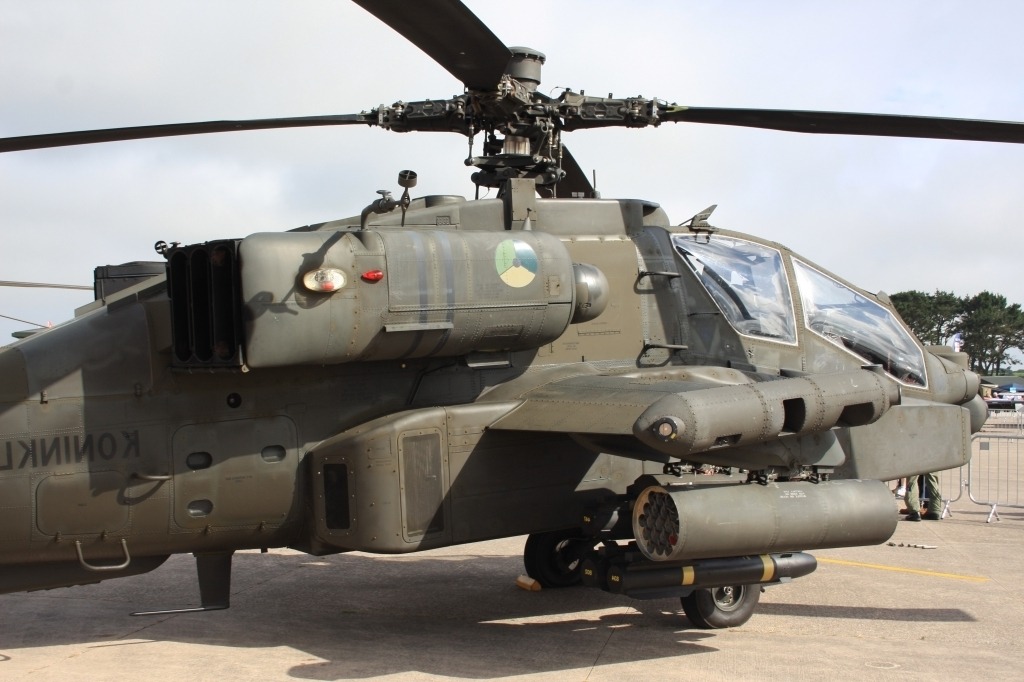
Related: Embraer Praetor 500 Specs, Price, Range, and Pictures
The AH-64 has four hardpoints mounted on stub-wing pylons and can be equipped with a combination of AGM-114 Hellfire missiles and Hydra-70 rockets. Typical configurations include 16 Hellfire missiles for anti-armor missions (4x four-rail launchers) or 8 Hellfire missiles (2x four-rail launchers) and two M261 rocket pods with 19 Hydra-70 rockets each. In the future, the AH-64 will carry the Joint-Air-to-Ground Missile (JAGM), which is currently being developed by the Army and Navy in cooperation with Lockheed Martin.
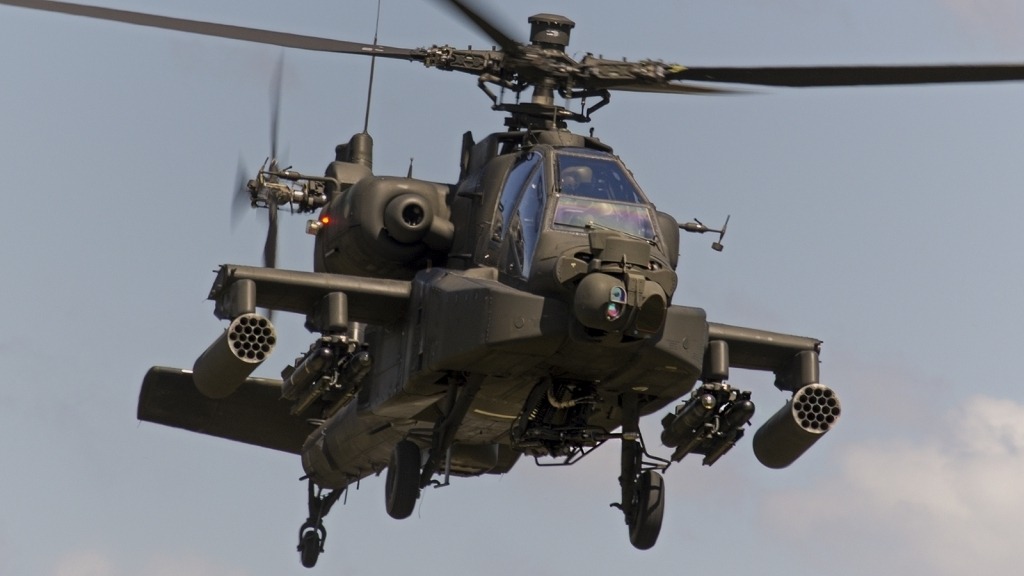
AH-64 Production Forecast
A 15-year AH-64 production forecast is available through Forecast International’s Platinum Forecast System, which includes a breakout of total market unit and value statistics by manufacturer and end-user. This real-time service also includes information on all prime and subcontractors, contract awards, worldwide inventories, a complete program history, and a rationale detailing the outlook of the program. A 10-year AH– 64 production forecast is also available in report format through Forecast International’s Rotorcraft Forecast service.
Mission/Role
The AH-64 provides a fire-and-forget Hellfire air-to-ground missile capability, modernized target acquisition and night vision capabilities. Conducts rear, close, and shaping missions including deep precision strike. Conducts distributed operations, precision strikes against relocatable targets and provides armed reconnaissance.
Related: Boeing P–8A Poseidon: Design, Development, Mission, and Specs
The AH-64E comes with a 30 mm M230 cannon with 1 200 rounds of ammunition. It has 4 hardpoint on stub wings and can carry various missiles. Armament is being tailored, depending on mission requirements. The AH-64E can carry up to 16 AGM-114R Hellfire 2 anti-tank guided missiles. For self defense against hostile helicopters the Apache Guardian can carry up to two AIM-9 Sidewinder, four AIM-92 Stinger, or four Mistral air-to-air missiles. It can also carry two AGM-122 Sidearm air-to-ground anti-radiation missiles, that can target hostile radars. The gunship is often equipped with 19-shot pods with Hydra 70 unguided rockets. The helicopter can carry up to 4 of these pods.

This attack helicopter might be fitted with a Longbow fire control radar, which is also used on the previous AH-64D variant. It gives the capability to fire AGM-114R Hellfire-2 anti-tank guided missiles in fire-and-forget mode. Without this radar the Hellfire-2 missiles are launched in the line-of-sight manner. The radar can detect, classify and prioritise 12 targets simultaneously, and can see through the fog an smoke, that foils infra-red or TV sensors.
